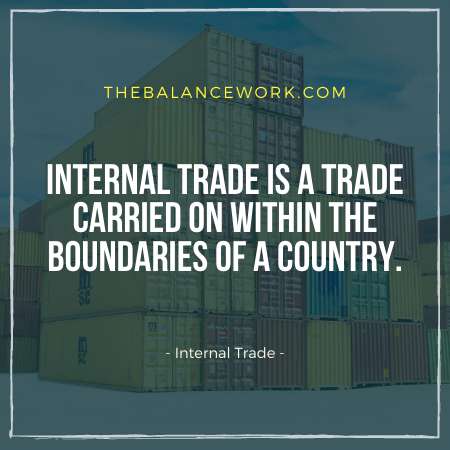This article will tell you about the classification of business. Business is a broad term that involves many smaller activities.
So Classifying these activities into specific categories is the theme of the article.
In general, business is the buying, selling, and exchanging of goods or services. The motive of all these activities is profit earning.
Business is an organized economic activity. So in business, the exchange of goods and services takes place.
It’s a way of making money from commercial transactions.
All those activities which make available goods to society belong to the business.
Classification Of Business – Industry And Commerce:
Now let’s explore the classification of business activities.
The classification of business divides it into two categories. These two categories are Industry and Commerce.
Production of goods falls into the category of industry. While its distribution belongs to commerce.
1. Industry As A Classification Of Business:
The making and manufacturing of goods take place in the industry. These business units are “industrial enterprises”.
It produces consumer goods, machinery, and equipment.
The industry changes the form of goods at any stage from raw material to finished product.

Thus the example, weaving woollen yarn into cloth.
The goods produced in the industry have their own classification. This classification depends on the processing.
Producer’s goods are the ones that other enterprises can use as raw material.
Examples of producer goods are the production of plant and machinery.
Consumer goods are the ones in their final form and consumers can use them. So Examples of such goods are cloth, groceries, and medicines.
Intermediate goods are materials that get further processed for conversion into finished goods. And examples are plastic, rubber, and aluminium, etc.
There are three bases on which classification of the industry takes place.
So It can be on the base of types of goods produced, on the base of size or investment or type of technology employed.
Take a look at these major categories and bases of classification side by side.
1. Primary Industry As A Classification Of Business:
Primary industries are those connected with the production of natural resources.
Reproduction and development of living organisms and plants also fall into this industry.
1. Genetic Industry As A Classification Of Business:
The genetic industry is the type of primary industry. Its concern is with the reproducing of certain species of animals and plants. The aim is to earn profits from their sale.

So examples of genetic industries are nurseries, fish hatcheries, and poultry farms.
The genetic industry works by growing plants and rearing animals. And selling these on profits.
Environmental factors and nature play an important part in this industry. But human skills are also inevitable and these industries can’t operate without it.
2. Extractive industry As A Classification Of Business:
Extractive industries extract or draw out products from natural resources. These natural resources can be earth, soil, or water.
The extractive industry has two categories. The focus of the first category is to collect existing products.
So the examples are mining, hunting, and fishing.
In the second category, goods get produced by the application of human skill. Examples are agriculture and forestry.
Extractive industries provide the basic raw material that is the product of the soil.
Products of these industries are either straight used. Or the manufacturing and construction industries use these products as raw materials.
2. Secondary Industry As A Classification Of Business:
Secondary industries use the material extracted at the primary stage. So that they can produce final goods.
These either prepares goods for final consumption. Or for further processing by other industrial units.
1. Construction Industry:
The construction industry handles making infrastructure for economic development.
It plays an important role in developing a stable economy for the country.

The basic concern of this industry is construction, erection, and fabrication of products.
Such industries construct buildings, dams, roads, bridges, and canals, etc.
These industries construct by using the products of other industries. These products can be cement, iron, bricks, and wood, etc.
There are many skills required to operate these industries. But the most important ones are engineering and architectural skills.
Engineering and construction firms get to work with construction industries.
Using human skills, the industries get their ideas turned into reality.
2. Manufacturing Industry As A Classification Of Business:
In the manufacturing industry, raw materials convert into finished goods. Sometimes the manufactured products are semi-finished.
This industry inserts utility in goods and makes them suitable for human use.
So a large part of the goods used by consumers comes from manufacturing industries.
Sometimes manufacturing industries serve as suppliers. These supply machines, tools, and equipment to other industries.
When the manufacturing industry uses the products from the extractive industry. So there come a further four categories.
1. Analytical Industry:
It’s an industry where during the analysis of one product occurs. While many other products get into shape as final products.
For example, in the processing of crude oil, we will get kerosene, gas, and petrol, etc.

2. Synthetic Industry As A Classification Of Business:
The synthetic industry is itself a wide industry. It consists of manufacturing procedures.
The manufacturing processes bring together the raw materials to make a final product.
Cement, rocks, gypsum, and coal are the basic requirements of manufacturing. These serve as the raw materials for the production of final goods.
Some examples of the synthetic industry are soap making and paint manufacturing.
3. Processing Industry:
In this industry, a product goes through a lot of processes. After that, the final form of the product comes into existence.
A series of processes combine to form one final product.
The final product of one process becomes the raw material for the receiving process. And soon the final process produces the finished good.
For example, in cotton textiles, cloth formation takes place through different processes. The cotton has to pass through ginning, weaving, and dyeing processes to become a final cloth.
Other notable examples are the paper industry and the sugar industry.
4. Assembling Industry:
Assembling the industry’s concern is to assemble the products into their final form. Different component parts get assembled to make a new product.

The process of assembling joins the components by specific points. All these assembled components then give the look of a final product.
Examples are television, automobiles, computer, and many other such industries.
3. Tertiary Industry As A Classification Of Business:
The third major category i.e. tertiary industries provide service facilities. These provide support services to primary and secondary industries.
At the same time, this industry’s concern is to provide support to activities related to trade. For example, banking and insurance, warehousing, packaging, and advertising, etc.
1. Small Scale Industry As A Classification Of Business:
The industrial units having an investment up to Rs. 1 crore are small scale industries.
There are some disadvantages associated with small scale industries. Such industries have a lower production due to their small operational capacity. At the same time, the cost of production becomes high.
2. Large Scale Industry As A Classification Of Business:
The classification of industries on the base of investment is not a hard and fast rule. But due to certain limits set by the government, the difference between size occurs.
Large scale industries are the ones investing more than Rs. 3 crores.

These industries invest in plant and machinery in manufacturing units and ancillary units.
Unlike smaller industries, these industries have an advantage of high production. Also, large scale industries are in a position to use the latest methods of production.
3. Light Industry As A Classification Of Business:
Industries that produce consumer goods are light industries. The production technology used by such industries is quite simple. And these use inexpensive machinery.
4. Heavy Industry As A Classification Of Business:
Such industries take part in the production of machinery, steel, and power generation.
The technology used is complex in nature and expensive. So these units need heavy investments.
SEE ALSO: What is a Direct Participation Program
2. Commerce As A Classification Of Business:
It is a set of activities that ease the distribution of goods to ultimate consumers.
The production of goods will be useless. Unless and until these goods reach the ultimate consumer.

So the goods get produced in one place and the customers are all over the globe. And commerce makes it possible for people to get goods produced anywhere in the world.
Commerce includes two types of activities that are Trade and Aids to trade.
Both these types are important in their own place. Here’s a detailed overview of these.
1. Trade As A Classification Of Business:
Trade is an integral part of commerce. There’s buying and selling of goods and services in trade.
This part of commerce makes a connection between the manufacturer and the consumer.
So without trade, it would be impossible to conduct production activities on a large scale.
Trade is further classified into two broad categories.
1. Internal Trade:
Internal trade is a trade carried on within the boundaries of a country. The buying and selling of goods and services take place within a geographical range.

The other names for internal trade are home trade or domestic trade. A person can sell or buy goods and services using only the home currency.
The internal trade can be of two types that are wholesale trade and retail trade
1. Wholesale Trade:
Wholesale trade involves purchasing and selling of goods in bulk. It’s all about buying goods from producers and selling them in small quantities to retailers.
Wholesaler deals in large quantities of goods of a limited number of varieties. He serves as a bridge between the producer and the retailer.
2. Retail trade:
Retail trade involves the selling of goods to consumers in smaller quantities. What retailers do is buy goods from wholesalers. Then they deal with a variety of goods from different manufacturers.
2. External Trade As A Classification Of Business:
External trade is a trade conducted between the two countries. The buying and selling of goods are between two traders from different countries.

External trade takes place without any geographical limits. So the market in such trade is very wide.
It has three types which are import trade, export trade, and entrepot trade
1. Import Trade:
When we buy goods from another country, that is import trade.
2. Export Trade:
Selling goods or services to other countries is export trade.
3. Entrepot Trade:
Importing goods from one country to export to another country is an entrepot trade.
2. Aids To Trade As A Classification Of Business:
Aids to trade involve those activities which assist in trade. Most of the times these activities are services in nature. Because these help the activities relating to industry and trade.
So such activities which makes buying and selling of goods easier are aids to trade. These help in removing obstacles production and distribution of goods.
So the most common aids to trade are discussed below:
1. Banking And Finance As A Classification Of Business:
Banking offers financial help to traders. The business has to buy raw material, assets and other manage other day-to-day expenses. For this purpose, they need funds from banking.
Businessmen can take necessary funds from commercial banks. These funds can be either in the form of overdraft, cash facilities or loans, and advances.

Banking is important for businesses because it helps them overcome the financial problems.
2. Insurance As A Classification Of Business:
Due to the risks involved in the business, insurance is important. There can be a risk of theft, fire, and accidents, etc.
So the risk of loss or damage to the materials held in stock is also a threat. Employees need protection against the risk of accidents and occupational hazards.
Insurance makes provision against all these risks. Producers can avoid the risk of losing goods by getting insurance.
See Also: What is a Guarantor
3. Transportation As A Classification Of Business:
Transportation helps to move the raw material to the place of production. And then finished goods from factories to places of consumption.
Different types of transportation are in use for such a purpose. These can be rails, roads, or coastal shipping.
It makes the exchange of goods efficient and fast. So transportation makes it possible for a business to sell goods all over the world.
4. Communication As A Classification Of Business:
Communication is necessary for building links with the outside world. It makes a link between suppliers, competitors, and customers.
Electronic media is managing the exchange of information in a quick way.
5. Warehousing As A Classification Of Business:
It is the process of preserving and holding goods until they get consumed. Warehousing creates time utility.

It helps businesses to overcome the problem of the utility of goods. And facilitates the availability of goods when needed.
6. Advertising:
Advertising helps to promote the sales of goods. It brings goods and services to the knowledge of prospective buyers.
8 Basic Characteristics Of Business:
So some prominent characteristics of the business are:
1. Business Is An Economic Activity:
Business is an economic activity. As we all know that the primary aim of doing business is to earn money. And earning money is an economic motive.
2. Business Involves Production Or Sale Of Goods and Services:
Business bodies produce and provide goods and services. These add value to the products and sell them to consumers.

Either the company manufactures the goods or the suppliers provide them. And their further aim is to sell the goods for making a profit.
3. Profit Earning Is The Basic Purpose:
Businesses have to make a profit from their activities. Because profit is the backbone of the business. It keeps the business going on.
4. Continuity In Dealings Is A Need:
Business needs regularity in transactions. A single transaction of exchange of goods or services is not a business.
For constituting business, there should be regularity in dealings.
5. There Is A Probability Of Uncertain Return In Business:
The return is not predictable in business. There is no guarantee. The amount of money a business will get back is uncertain.
There might be a huge profit at the end of the day. Or the business might suffer heavy losses.
6. Risk Is The Key Element:
Risk is the key element of every business, concerned with exposure to loss. Business plans its strategies by forecasting future events.
The factors affecting business as well as business opportunities are uncertain. There can be a shift in demand, a fall in prices, and money market fluctuation.
7. Consumer Satisfaction Is A Priority:
The business provides goods and services to consumers to meet their needs.
The satisfaction of consumers leads them to buy again. But if they are not satisfied they might look for substitutes.

8. The Business Should Be Legal And Lawful:
No matter what, the company is doing what kind of business. It should be legal and lawful.
Conclusion:
The categories of business are in a close relationship with each other. These depend upon each other for achieving the aims and objectives of the business.
Here’s an example for understanding the relationship between industry, trade, and commerce.
Industry’s concern is the production of goods and services. Trade helps in the sale and buying of products.
While commerce is the one that facilitates the distribution of products.
Their success depends on each other. The success of the industry is possible if there is good marketing. And without the production of goods, there can’t be any commerce and trade.
So trade provides enough support to industry and commerce.
Thus, industry, trade, and commerce are interdependent. These can’t work in isolation. A strong connection is necessary for the survival of all.
Service facilities also play an important part. These provide the necessary support to trade.
Last Updated on 21 hours by Shahzaib Arshad
- 7 Great Signs Your Boss Wants to Help You - October 8, 2023
- How To Explain Dropping Out Of Law School? Detailed Guide - September 6, 2023
- 10 Reasons Employees Get Fired in Workplace - August 27, 2023